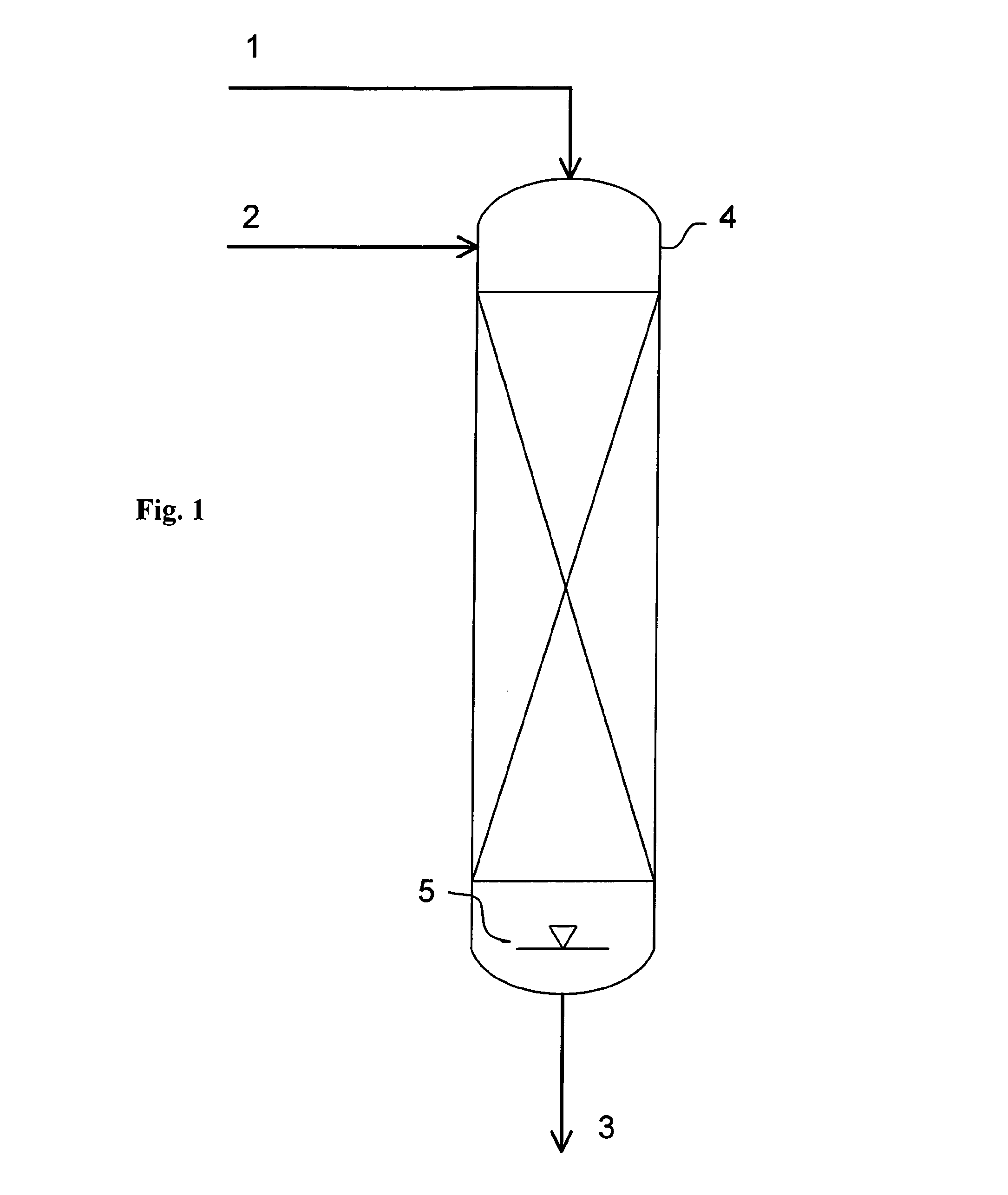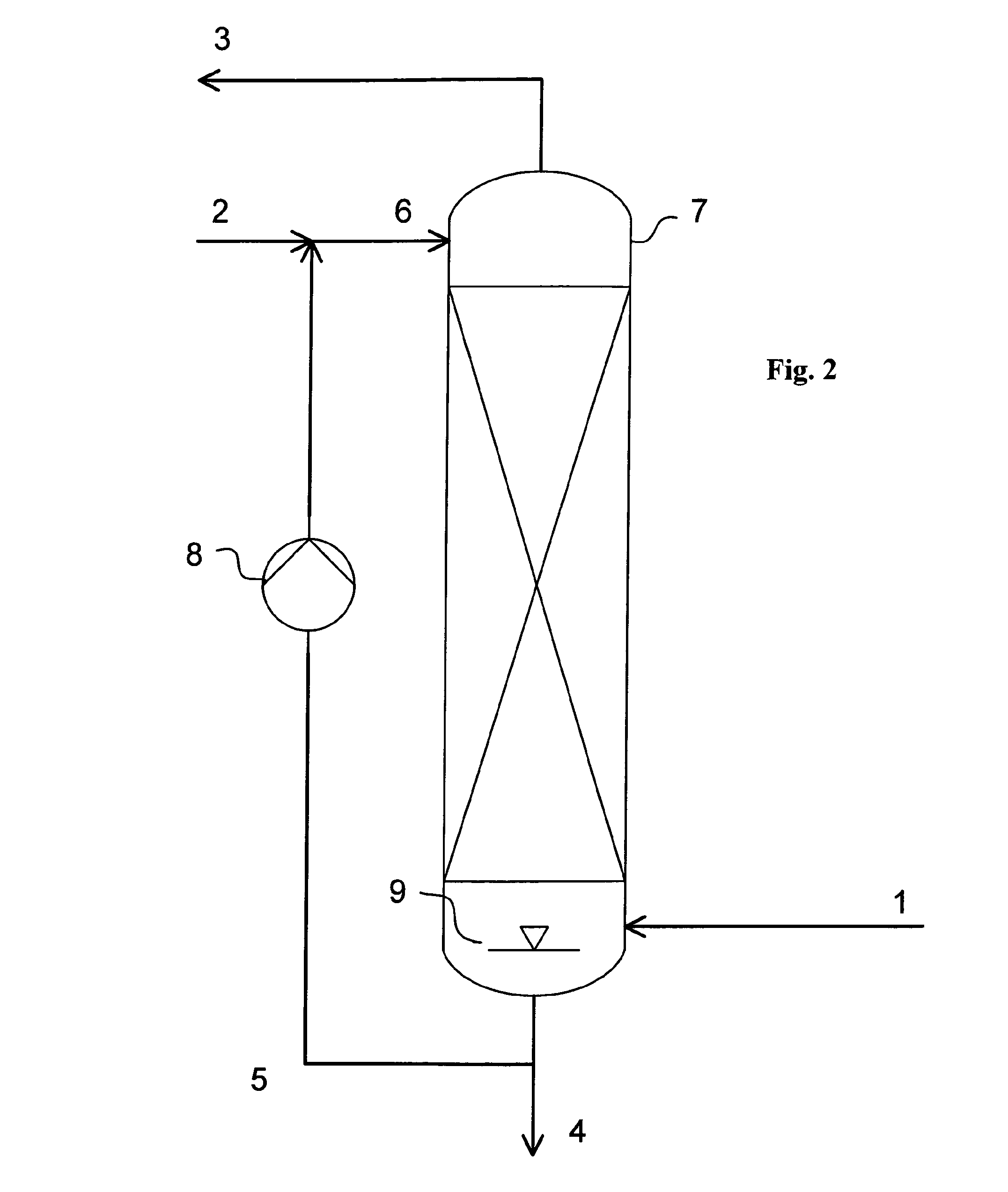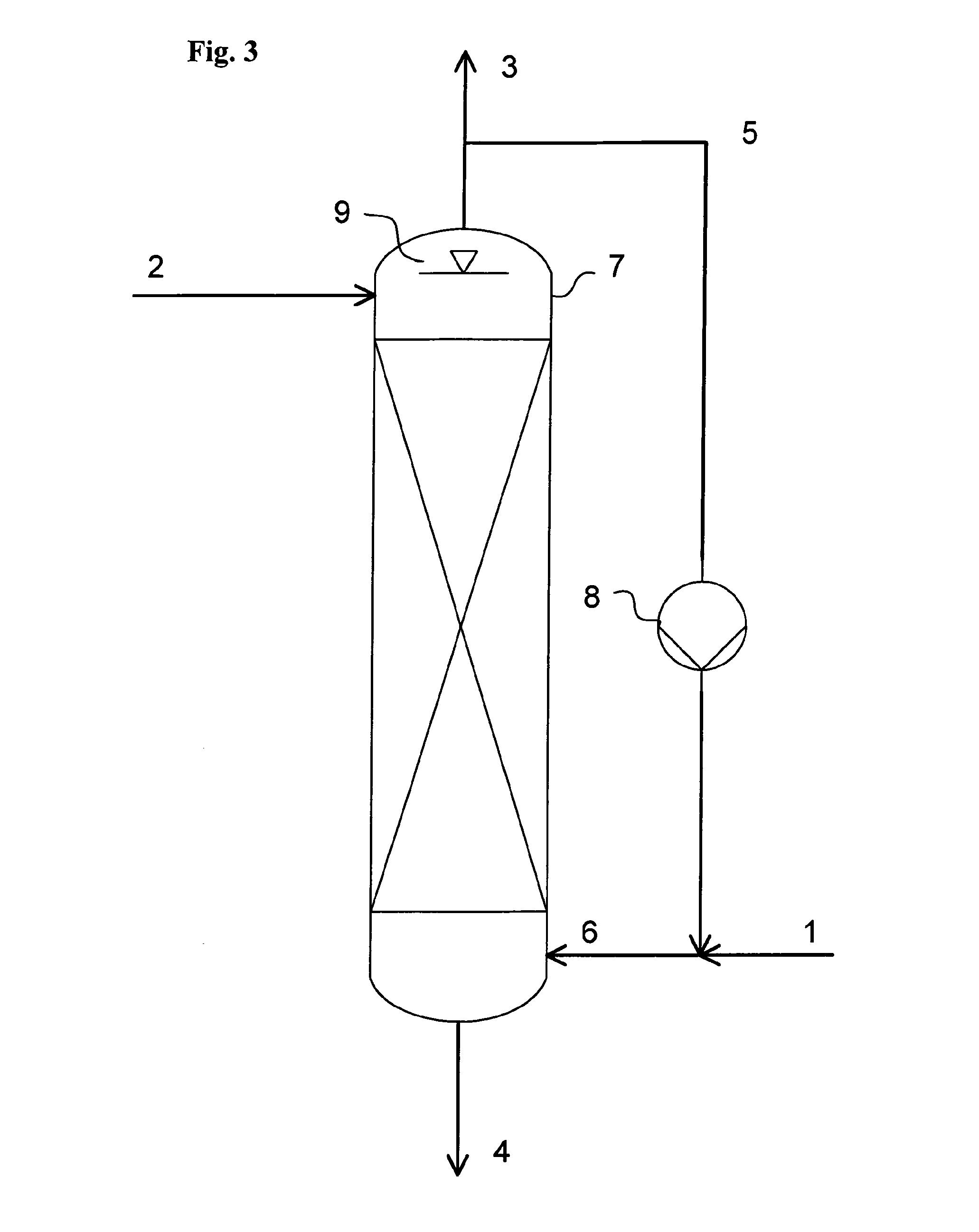Process for the production of lower alcohols by olefin hydration
a technology of olefin and olefin, which is applied in the field of process for the production of lower alcohols by olefin hydration, can solve the problems of high pressure to dissolve olefin, and achieve the effects of low pressure drop, high hold-up, and space-time yield (sty) of max
- Summary
- Abstract
- Description
- Claims
- Application Information
AI Technical Summary
Benefits of technology
Problems solved by technology
Method used
Image
Examples
example 1
[0060]Butylenes were used as the olefins for the comparison of different flow and hold-up situations. In the FIGS. 2 and 3 the reactor 7 is fed by the olefin inlet stream 1 and the water inlet stream 2. The reactor is equipped with a structured catalytic packing (Sulzer Chemtech Katapak) and an adequate temperature control. Stream 3 is the organic phase outlet and stream 4 is the aqueous phase outlet. The minor part of stream 3 served as purge stream. The recycle stream 5 is moved by pump 8 and is combined with a feed stream to the reactor inlet stream 6. Number 9 marks the position of the phase boundary layer between organic and aqueous phase.
[0061]Four different Operation modes were investigated:
[0062]a) Butylenes were the stationary phase and water was the mobile phase. Separation layer 9 was below the catalytic packing, see FIG. 2. Recovery of SBA was done from the aqueous phase, stream 4. There was no recycle, stream 5 was zero. By feeding 1980 gr / hr of water (stream 2) a react...
example 2
[0066]Propylene was used as the olefin for the comparison of different flow and hold-up situations. In the FIGS. 2 and 3 the reactor 7 is fed by the olefin inlet stream 1 and the water inlet stream 2. The reactor is equipped with a structured catalytic packing and an adequate temperature control. Stream 3 is the organic phase outlet and stream 4 is the aqueous phase outlet. The minor part of stream 3 served as purge stream. The recycle stream 5 is moved by pump 8 and is combined with a feed stream to the reactor inlet stream 6. Number 9 marks the position of the phase boundary layer between organic and aqueous phase.
[0067]Four different operation modes were investigated:
[0068]a) Propylene was the stationary phase and water was the mobile phase. Separation layer 9 was below the catalytic packing, see FIG. 2. Recovery of IPA was done from the aqueous phase, stream 4. There was no recycle, stream 5 was zero. By feeding 1981 gr / hr of water (stream 2) a reaction product of 2110 gr / hr (st...
PUM
| Property | Measurement | Unit |
|---|---|---|
| temperature | aaaaa | aaaaa |
| pressures | aaaaa | aaaaa |
| angle | aaaaa | aaaaa |
Abstract
Description
Claims
Application Information
 Login to View More
Login to View More - R&D
- Intellectual Property
- Life Sciences
- Materials
- Tech Scout
- Unparalleled Data Quality
- Higher Quality Content
- 60% Fewer Hallucinations
Browse by: Latest US Patents, China's latest patents, Technical Efficacy Thesaurus, Application Domain, Technology Topic, Popular Technical Reports.
© 2025 PatSnap. All rights reserved.Legal|Privacy policy|Modern Slavery Act Transparency Statement|Sitemap|About US| Contact US: help@patsnap.com



